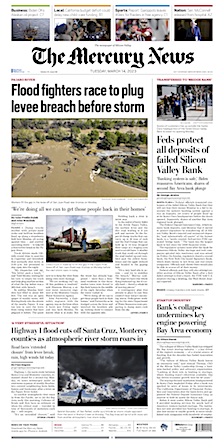
The Mercury News is a morning daily newspaper published in San Jose, California, in the San Francisco Bay Area. It is published by the Bay Area News Group, a subsidiary of Digital First Media. As of March 2013, it was the fifth largest daily newspaper in the United States, with a daily circulation of 611,194. As of 2018, the paper has a circulation of 324,500 daily and 415,200 on Sundays. As of 2021, this further declined. The Bay Area News Group no longer reports its circulation, but rather "readership". For 2021, they reported a "readership" of 312,700 adults daily.

John Newbery, considered "The Father of Children's Literature", was an English publisher of books who first made children's literature a sustainable and profitable part of the literary market. He also supported and published the works of Christopher Smart, Oliver Goldsmith and Samuel Johnson. In recognition of his achievements the Newbery Medal was named after him in 1922.
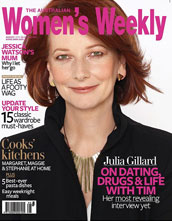
The Australian Women's Weekly, sometimes known as simply The Weekly, is an Australian monthly women's magazine published by Mercury Capital in Sydney. For many years it was the number one magazine in Australia before being outsold by the Australian edition of Better Homes and Gardens in 2014. As of February 2019, The Weekly has overtaken Better Homes and Gardens again, coming out on top as Australia's most read magazine. The magazine invested in the 2020 film I Am Woman about Helen Reddy, singer, feminist icon and activist. Editor-in-chief Nicole Byers told Film Ink "Helen’s story of adversity and triumph is nothing short of inspirational. The Weekly has been telling stories of iconic Australian women for more than 80 years and we're delighted to be supporting the film production".
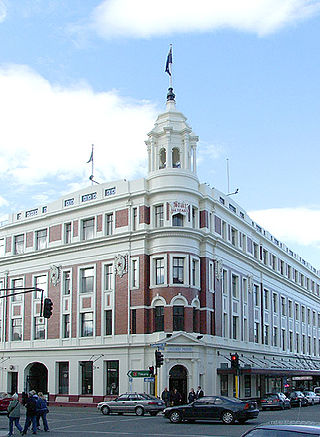
The Otago Daily Times (ODT) is a newspaper published by Allied Press Ltd in Dunedin, New Zealand. The ODT is one of the country's four main daily newspapers, serving the southern South Island with a circulation of around 26,000 and a combined print and digital annual audience of 304,000. Founded in 1861 it is New Zealand's oldest surviving daily newspaper – Christchurch's The Press, six months older, was a weekly paper until March 1863.

The Argus was an Australian daily morning newspaper in Melbourne from 2 June 1846 to 19 January 1957, and was considered to be the general Australian newspaper of record for this period. Widely known as a conservative newspaper for most of its history, it adopted a left-leaning approach from 1949. The Argus's main competitor was David Syme's more liberal-minded newspaper, The Age.

The Scone Advocate is an Australian local newspaper, serving the communities of Scone, Aberdeen and Murrurundi in the Upper Hunter Valley. It is owned by Australian Community Media, and goes on sale each Thursday for $1.40. The newspaper was founded in 1887, the same year Scone was declared a municipality.

The Tulsa World is the daily newspaper for the city of Tulsa, Oklahoma, and primary newspaper for the northeastern and eastern portions of Oklahoma. Tulsa World Media Company is part of Lee Enterprises. The new owners announced in January 2020 that a corporate purchase was made of BH Media Group, a Berkshire Hathaway company controlled by Warren Buffett. The printed edition is the second-most circulated newspaper in the state, after The Oklahoman. It was founded in 1905 and locally owned by the Lorton family for almost 100 years until February 2013, when it was sold to BH Media Group. In the early 1900s, the World fought an editorial battle in favor of building a reservoir on Spavinaw Creek, in addition to opposing the Ku Klux Klan in the 1920s. The paper was jointly operated with the Tulsa Tribune from 1941 to 1992.
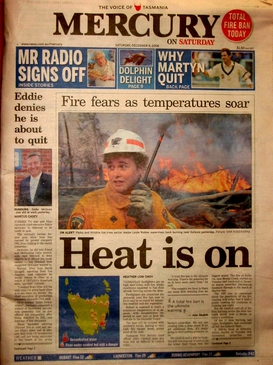
TheMercury is a daily newspaper, published in Hobart, Tasmania, Australia, by Davies Brothers Pty Ltd (DBL), a subsidiary of News Corp Australia, itself a subsidiary of News Corp. The weekend issues of the paper are called Mercury on Saturday and Sunday Tasmanian. The current editor of TheMercury is Craig Warhurst.

The Swindon Advertiser is a daily tabloid newspaper, published in Swindon. The newspaper was founded in 1854, and had an audited average daily circulation at the end of 2017 of 8,828.
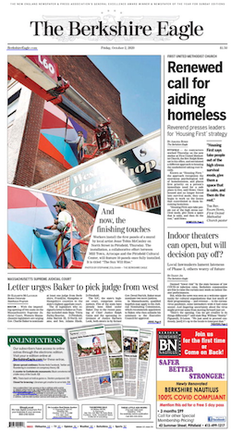
The Berkshire Eagle is an American daily newspaper published in Pittsfield, Massachusetts, and covering all of Berkshire County, as well as four New York communities near Pittsfield. It is considered a newspaper of record for Berkshire County, Massachusetts.
The North Adams Transcript, prior to being merged into The Berkshire Eagle in 2014, was an American daily newspaper published Mondays through Saturdays in North Adams, Massachusetts. It was one of four Massachusetts newspapers owned by MediaNews Group of Colorado. Under the ownership of MediaNews Group and later Digital First Media, it was part of the New England Newspapers group. The group also included the Berkshire Eagle and Advocate Weekly, as well as three Vermont newspapers — the Bennington Banner, Brattleboro Reformer and Manchester Journal. The Advocate Weekly was shut down in January 2014.
The Herald was a morning and, later, evening broadsheet newspaper published in Melbourne, Australia, from 3 January 1840 to 5 October 1990, which is when it merged with its sister morning newspaper The Sun News-Pictorial to form the Herald-Sun.
The Daily News, historically a successor of The Inquirer and The Inquirer and Commercial News, was an afternoon daily English language newspaper published in Perth, Western Australia, from 1882 to 1990, though its origin is traceable from 1840.
The Harrow Observer was a paid-for local weekly tabloid newspaper covering stories from the London Borough of Harrow. It had separate editions for Pinner, Harrow, Stanmore and Wembley & Willesden. The former newspaper titles were retained by its owners, Reach plc, as branding for the Harrow, Pinner and Wembley sections of their getwestlondon news website, which is now MyLondon.
The Public Ledger is one of the world's longest continuously running magazines. Today it provides agricultural commodity news, analyses and prices. When established in 1760, however, it not only contained prices of commodities in London, but a wide variety of political, commercial and society news and commentary. It was established by John Newbery, who was better known for his pioneering children's literature. The Public Ledger was London's fourth daily newspaper in a golden age from 1730 to 1772 for 'Advertisers' – two-page advertising-driven newspapers set up after political parties withdrew subsidies to London newspapers. It is also in a stable of agricultural and bioenergy newsletters and conferences at AgraNet. Both in print and web forms, it provides its international subscribers with news, prices and analysis for agricultural commodities such as grains, feed and oilseeds; soft commodities including coffee, cocoa and sugar; and minor commodities such as spices, dried fruit and nuts.
The Sunday Mercury (1839–1896) was a weekly Sunday newspaper published in New York City that grew to become the highest-circulation weekly newspaper in the United States at its peak. It was known for publishing and popularizing the work of many notable 19th-century writers, including Charles Farrar Browne and Robert Henry Newell, and was the first Eastern paper to publish Mark Twain. It was also the first newspaper to provide regular coverage of baseball, and was popular for the extensive war correspondence from soldiers it published during the Civil War.
The Tameside Reporter is a locally based weekly newspaper which primarily serves the Metropolitan Borough of Tameside. It is one of very few remaining independently owned newspapers in the country and has existed since 1855. The group previously distributed a free weekly newspaper, called the Ashton Reporter in recognition of the group's origins, and continues to publish the Glossop Chronicle.
Elizabeth Anne Le Noir was an English female poet, novelist, and feminist from the romantic period. Raised in a widowed home, Le Noir became interested in literature through opportunities she was given by her mother's step-father; John Newbery. After being employed at the Reading Mercury for some time, Le Noir and her sister eventually inherited it. Le Noir soon became the wife of Jean Baptiste Le Noir, from whom she got her last name. Although she didn't have any children of her own, she educated two of her female relatives. Although Le Noir had many great works, "[s]he is probably better known as the daughter of the famous religious poet Christopher Smart."

Taxes on knowledge was a slogan defining an extended British campaign against duties and taxes on newspapers, their advertising content, and the paper they were printed on. The paper tax was early identified as an issue: "A tax upon Paper, is a tax upon Knowledge" is a saying attributed to Alexander Adam (1741–1809), a Scottish headmaster.









